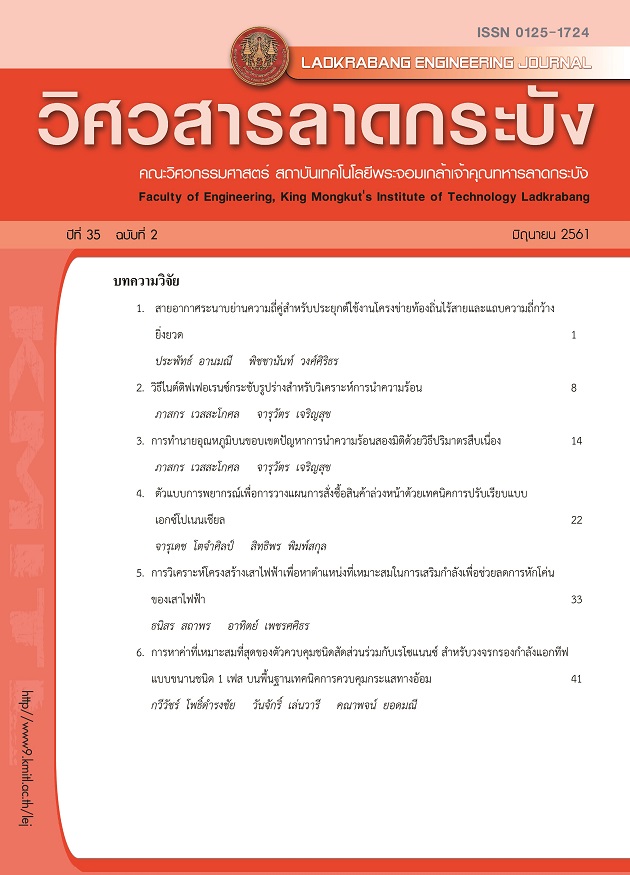A Body-Fitted Finite Difference Method for Heat Conduction Analysis
Keywords:
Body-Fitted Coordinate, Finite Difference Method, Heat conductionAbstract
This paper illustrates the implementation and performance of Body-Fitted Finite Difference Method in simulating the steady two-dimensional heat conduction problems. Firstly, the initial grid is generated by the Transfinite Interpolation (TFI) technique. Then, the good quality mesh is obtained by smoothing the initial grid by the elliptic grid generator. The numerical solution is done by the system of finite difference equations written on the Body-Fitted Coordinate (BFC) and the thermal conditions assigned on the domain boundaries. It can be seen that the present method can accurately solve the heat conduction problems in complex geometries.
References
M., Vinokur, Conservation Equations of Gas Dynamics in Curvilinear Coordinate Systems, Journal of Computational Physics, vol. 14, pp. 105-125, 1992.
J. F., Thompson, F.C., Thames and C. W. Mastin, Automatic Numerical Generation of Body-Fitted Curvilinear Coordinates System for Field Containing any Number of Arbitrary Two-dimensional Bodies, Journal of Computational Physics, vol. 15, pp. 299-319, 1974.
W.N., Gordon and C.A., Hall, Construction of Curvilinear Coordinate Systems, International Journal of Numerical Methods in Engineering, vol. 7, pp.461-477, 1973.
S., Putivisutisak and S., Prasertlarp, Calculation of Heat Transfer and Fluid Flow in Complex Geometries Using a Finite Volume Method in Body-Fitted Coordinates, KNUTNB Int. J. Appl. Sci. Technol., vol. 6, no. 3, pp. 1-9, Jul.-Sep., 2013.
D.V., Nance, Finite Volume Algorithms for Heat Conduction, Air Force Research Laboratory, 2010.
Downloads
Published
How to Cite
Issue
Section
License
The published articles are copyrighted by the School of Engineering, King Mongkut's Institute of Technology Ladkrabang.
The statements contained in each article in this academic journal are the personal opinions of each author and are not related to King Mongkut's Institute of Technology Ladkrabang and other faculty members in the institute.
Responsibility for all elements of each article belongs to each author; If there are any mistakes, each author is solely responsible for his own articles.






